

 Use **Area Settings** to configure the following properties:
* **Name** - a name for the navigation area element that is visible in the **Navigation menu**
Use **Area Settings** to configure the following properties:
* **Name** - a name for the navigation area element that is visible in the **Navigation menu**
 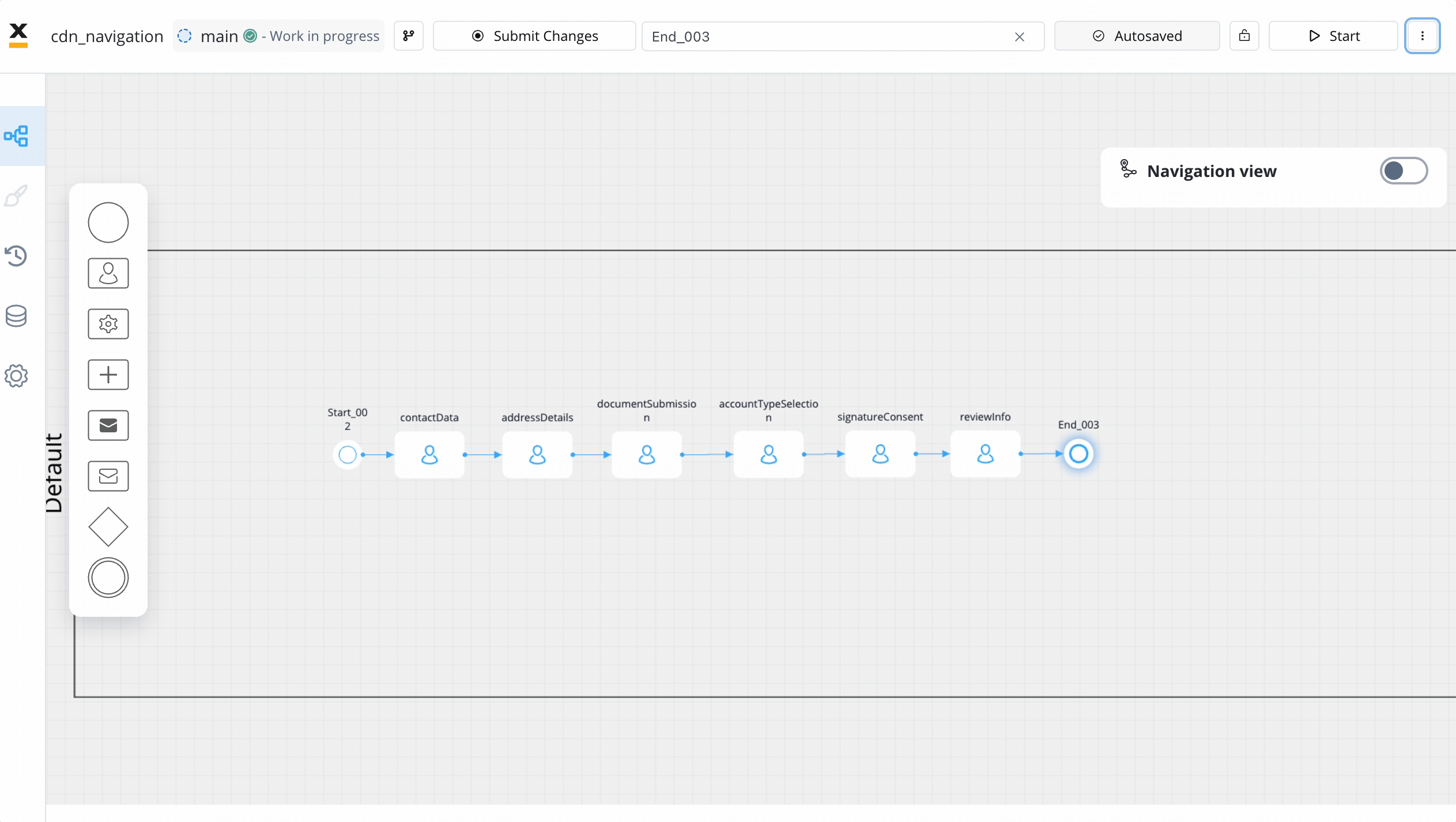
### Stepper
Sequential workflow navigation that breaks down complex processes into logical, numbered steps.

### Stepper
Sequential workflow navigation that breaks down complex processes into logical, numbered steps.
 **Key Features:**
* Progress tracking with visual indicators
* Return to previously visited steps
* Maximum 2 levels of nesting supported
**Key Features:**
* Progress tracking with visual indicators
* Return to previously visited steps
* Maximum 2 levels of nesting supported
When the connection with the database fails
when the connection with [Redis](../../../platform-overview/frameworks-and-standards/event-driven-architecture-frameworks/intro-to-redis) fails
| | Definition | Misconfigurations: process def name, subprocess parent process id value, start node condition missing. | | Node | When an outgoing node can’t be found (missing sequence etc). | | Gateway Evaluation |When the token can’t pass a gateway for any reason, possible causes:

 ### Edit Existing Processes
1. **Generate Process from BPMN File**
* Imports and interprets existing BPMN files
* Converts external BPMN formats into FlowX.AI-compatible representations
2. **Generate In-between Nodes**
* Adds missing steps between existing nodes in a workflow
* Enhances process completeness and logical flow
### Edit Existing Processes
1. **Generate Process from BPMN File**
* Imports and interprets existing BPMN files
* Converts external BPMN formats into FlowX.AI-compatible representations
2. **Generate In-between Nodes**
* Adds missing steps between existing nodes in a workflow
* Enhances process completeness and logical flow

 3. **Generate from Node**
* Expands a process by adding subsequent steps after a specified node
* Allows incremental development of complex workflows
3. **Generate from Node**
* Expands a process by adding subsequent steps after a specified node
* Allows incremental development of complex workflows

 4. **Edit Existing Process**
* Modifies components of an existing process based on user instruction
* Updates node properties, connections, or process structure
4. **Edit Existing Process**
* Modifies components of an existing process based on user instruction
* Updates node properties, connections, or process structure

 ## User Experience
The AI Analyst is accessed through the FlowX.AI Platform interface. Users can:
1. Select the desired capability from the AI Analyst section
2. Provide input in the appropriate format (text prompt, image, document, or BPMN file)
3. Add additional context or requirements if needed
4. Review the generated process in a visual BPMN format
5. Make adjustments through the "Edit" capabilities if necessary
6. Implement the final workflow in their project
The interaction follows a human-in-the-loop approach, allowing for quality checks and iterative improvements to ensure the generated process meets requirements.
## Anatomy
The AI Analyst architecture integrates multiple AI components to process different input types and generate standardized BPMN output.
The workflow begins with a user query that gets rewritten for clarity. A quality check determines if more information is needed, in which case a human provides additional context. Once sufficient information is available, the process generation component creates the BPMN workflow, which is then delivered to the user.
## Top rules for Designer AI Agent prompting
### ✅ DO the following
## User Experience
The AI Analyst is accessed through the FlowX.AI Platform interface. Users can:
1. Select the desired capability from the AI Analyst section
2. Provide input in the appropriate format (text prompt, image, document, or BPMN file)
3. Add additional context or requirements if needed
4. Review the generated process in a visual BPMN format
5. Make adjustments through the "Edit" capabilities if necessary
6. Implement the final workflow in their project
The interaction follows a human-in-the-loop approach, allowing for quality checks and iterative improvements to ensure the generated process meets requirements.
## Anatomy
The AI Analyst architecture integrates multiple AI components to process different input types and generate standardized BPMN output.
The workflow begins with a user query that gets rewritten for clarity. A quality check determines if more information is needed, in which case a human provides additional context. Once sufficient information is available, the process generation component creates the BPMN workflow, which is then delivered to the user.
## Top rules for Designer AI Agent prompting
### ✅ DO the following

 AI in FlowX.AI is built on a system of interconnected language models that's refreshingly LLM-agnostic (because who wants to be locked into a single model these days?). It uses an agent-based architecture where specialized AI workers tackle various tasks, all while staying connected to the data flowing through the FlowX Platform.
**Being LLM Agnostic, FlowX AI-Core offers deployment flexibility that would make a yoga instructor jealous:**
1. **The DIY Option**: Run your own custom LLM models through what we like to call our "model registry mechanism." Bring your own models, we'll handle the wiring.
2. **The Integration Play**: Deploy FlowX without our LLM models and connect to your internal LLMs that support the OpenAI API format. Just point our agents to your endpoint via `ENV_VARS` and you're good to go.
3. **The Cloud Route**: Connect to public LLM providers like OpenAI, Google, Microsoft, Anthropic, IBM, or whatever new AI company popped up while you were reading this doc.
Access to the LLM can be done through a proxy or gateway as soon as access is granted to the AI agents to access and create an inference.
Using AI-Core in FlowX.AI it can help enterprises save time, improve quality, and enhance creativity. By providing users with suggestions that are relevant and diverse, FlowX.AI can help users generate content much faster.
Agents in FlowX.AI were built based on specific use-cases to read, understand and process FlowX.AI data by offering assisted-development similar to GitHub Copilot.
***
## Access AI in FlowX
In FlowX.AI, one shortcut rules them all: Cmd/CTRL+K. Wherever you are in our platform, you can bring up the command palette by using the same keyboard shortcut.
AI in FlowX.AI is built on a system of interconnected language models that's refreshingly LLM-agnostic (because who wants to be locked into a single model these days?). It uses an agent-based architecture where specialized AI workers tackle various tasks, all while staying connected to the data flowing through the FlowX Platform.
**Being LLM Agnostic, FlowX AI-Core offers deployment flexibility that would make a yoga instructor jealous:**
1. **The DIY Option**: Run your own custom LLM models through what we like to call our "model registry mechanism." Bring your own models, we'll handle the wiring.
2. **The Integration Play**: Deploy FlowX without our LLM models and connect to your internal LLMs that support the OpenAI API format. Just point our agents to your endpoint via `ENV_VARS` and you're good to go.
3. **The Cloud Route**: Connect to public LLM providers like OpenAI, Google, Microsoft, Anthropic, IBM, or whatever new AI company popped up while you were reading this doc.
Access to the LLM can be done through a proxy or gateway as soon as access is granted to the AI agents to access and create an inference.
Using AI-Core in FlowX.AI it can help enterprises save time, improve quality, and enhance creativity. By providing users with suggestions that are relevant and diverse, FlowX.AI can help users generate content much faster.
Agents in FlowX.AI were built based on specific use-cases to read, understand and process FlowX.AI data by offering assisted-development similar to GitHub Copilot.
***
## Access AI in FlowX
In FlowX.AI, one shortcut rules them all: Cmd/CTRL+K. Wherever you are in our platform, you can bring up the command palette by using the same keyboard shortcut.

 **AI Agents** are built in all layers of FlowX Platform covering the entire timeline for creating, consuming and maintaining an application:
**AI Agents** are built in all layers of FlowX Platform covering the entire timeline for creating, consuming and maintaining an application:

 AI Agents are strategically embedded in every layer of the FlowX Platform. They're like the Avengers of banking software—if Iron Man specialized in UI design and Captain America was really good at compliance.
### Why Multi-Agent Architecture Matters?
Our multi-agent approach makes traditional monolithic AI systems look like they're still using dial-up internet:
| Feature | FlowX Multi-Agent Approach | Traditional Banking AI |
| ------------------ | ---------------------------------------------------------- | -------------------------------------------- |
| **Specialization** | Purpose-built agents for specific banking functions | Generic capabilities requiring customization |
| **Adaptability** | Modular updates to individual agents as regulations change | Complete system overhauls (ouch) |
| **Transparency** | Clear visibility into agent decision processes | Black box of mystery |
| **Resilience** | System continues despite component failures | One crash and everyone's having a bad day |
## FlowX.AI Agents
Our platform organizes intelligent agents into four functional layers—because three would be insufficient and five would be showing off:
### BUILD Agents
In the BUILD layer we have agents that automate and streamline the creation of data architectures, process models, integrations, user interfaces, and business rules by generating and validating content based on natural language prompts, existing documents, and best practices.
AI Agents are strategically embedded in every layer of the FlowX Platform. They're like the Avengers of banking software—if Iron Man specialized in UI design and Captain America was really good at compliance.
### Why Multi-Agent Architecture Matters?
Our multi-agent approach makes traditional monolithic AI systems look like they're still using dial-up internet:
| Feature | FlowX Multi-Agent Approach | Traditional Banking AI |
| ------------------ | ---------------------------------------------------------- | -------------------------------------------- |
| **Specialization** | Purpose-built agents for specific banking functions | Generic capabilities requiring customization |
| **Adaptability** | Modular updates to individual agents as regulations change | Complete system overhauls (ouch) |
| **Transparency** | Clear visibility into agent decision processes | Black box of mystery |
| **Resilience** | System continues despite component failures | One crash and everyone's having a bad day |
## FlowX.AI Agents
Our platform organizes intelligent agents into four functional layers—because three would be insufficient and five would be showing off:
### BUILD Agents
In the BUILD layer we have agents that automate and streamline the creation of data architectures, process models, integrations, user interfaces, and business rules by generating and validating content based on natural language prompts, existing documents, and best practices.

 FlowX AI Agents are built for the stringent security requirements of the banking sector:
* **Zero-Trust Security Model**: FlowX AI Agents utilize a dynamic Zero-Trust security approach, ensuring that all components within the system authenticate each other. This prevents unauthorized access and ensures that interactions within the platform remain secure.
* **Input and Output Scanners**: The platform employs a comprehensive set of input and output scanners, including those for detecting prompt injection, banning sensitive substrings, and sanitizing outputs. This minimizes the risk of harmful or unauthorized data being processed or exposed.
* **Custom Fine-Tuned Models**: FlowX develops custom fine-tuned models for each use case, tailored with curated data, which enhances the accuracy and security of AI agents, particularly in sensitive environments like banking.
* **Human Oversight and Monitoring**: The platform includes robust human-in-control mechanisms, enabling human oversight and control over AI agents to ensure ethical decision-making and secure interactions, crucial for high-stakes environments like banking.
## Advanced Hallucination Prevention
FlowX AI Agents are built for the stringent security requirements of the banking sector:
* **Zero-Trust Security Model**: FlowX AI Agents utilize a dynamic Zero-Trust security approach, ensuring that all components within the system authenticate each other. This prevents unauthorized access and ensures that interactions within the platform remain secure.
* **Input and Output Scanners**: The platform employs a comprehensive set of input and output scanners, including those for detecting prompt injection, banning sensitive substrings, and sanitizing outputs. This minimizes the risk of harmful or unauthorized data being processed or exposed.
* **Custom Fine-Tuned Models**: FlowX develops custom fine-tuned models for each use case, tailored with curated data, which enhances the accuracy and security of AI agents, particularly in sensitive environments like banking.
* **Human Oversight and Monitoring**: The platform includes robust human-in-control mechanisms, enabling human oversight and control over AI agents to ensure ethical decision-making and secure interactions, crucial for high-stakes environments like banking.
## Advanced Hallucination Prevention

 * **RAG**: We use Retrieval-Augmented Generation (RAG) to ground responses in reliable, external data sources.
* **Architecture**: We employ a multi-agent architecture where each task is assigned to dedicated agents, allowing for efficient task splitting and specialized processing.
* **JSON**: We enforce structured JSON outputs because letting an AI freestyle its responses would be like letting a toddler freestyle with finger paints in your living room.
* **LLM EVALUATION**: We relentlessly test models to find the perfect fit for each banking task. It's like speed dating, but for AI models, and the stakes are your bank's efficiency.
* **PROMPT Tuning**: Prompt tuning for each task customizes the model’s responses, enhancing accuracy and relevance while reducing the likelihood of hallucinations
# FlowX.AI platform setup
Source: https://docs.flowx.ai/5.1/ai-platform/ai-platform-setup
This guide provides essential information for clients who need to configure and connect to the FlowX.AI Platform services.
This guide provides essential information for clients who need to configure and connect to the FlowX.AI Platform services.
## Service endpoints
### Java services
| Service Name | Default Port | Protocol | Purpose |
| ------------------------- | ------------ | -------- | ----------------------- |
| **Connected Graph** | 9100 | GraphQL | Knowledge graph queries |
| **Agents** | 9101 | gRPC | Agent management |
| **Binaries** | 9102 | gRPC | File storage |
| **Conversations** | 9103 | gRPC | Conversation management |
| **Models** | 9104 | gRPC | AI model configuration |
| **Tenants** | 9105 | gRPC | Multi-tenant management |
| **Knowledge Graph (KAG)** | 9106 | gRPC | Knowledge ingestion |
### Python services
| Service Name | Default Port | Protocol | Purpose |
| ---------------- | ------------ | -------- | ------------------ |
| **Planner** | 9150 | gRPC | Task orchestration |
| **AI Developer** | 9151 | REST | Code generation |
| **AI Analyst** | 9152 | REST | Process analysis |
| **AI Designer** | 9153 | REST | UI generation |
> **Production Note**: In production deployments, all services run on port 9100. The ports listed above are for local development using docker-compose.
## Required environment variables
### Service discovery configuration
These variables control how services locate each other:
| Variable | Type | Default | Description |
| ------------------------------- | ------ | ------------- | --------------------------------------------------------------- |
| `GRPC_HOST_RESOLVER` | String | `k8s` | Service discovery method (`k8s` or `host`) |
| `GRPC_HOST_RESOLVER_HELM_CHART` | String | - | Helm chart name (required when `GRPC_HOST_RESOLVER=k8s`) |
| `GRPC_HOST_RESOLVER_FIXED_IP` | String | `ai-platform` | Fixed IP for services (required when `GRPC_HOST_RESOLVER=host`) |
**Configuration Examples:**
For Kubernetes deployment:
```bash theme={"system"}
GRPC_HOST_RESOLVER=k8s
GRPC_HOST_RESOLVER_HELM_CHART=ai-platform
```
For local/Docker deployment:
```bash theme={"system"}
GRPC_HOST_RESOLVER=host
GRPC_HOST_RESOLVER_FIXED_IP=localhost
```
### Service port configuration
| Variable | Type | Default | Description |
| -------------- | ------- | ------- | --------------------------- |
| `SERVICE_PORT` | Integer | 9100 | Port the service listens on |
### Service endpoint overrides
For custom service locations:
| Variable Pattern | Example | Description |
| ---------------------------------- | ------------------------------------------------------ | ---------------------------------- |
| `AI_SERVICE_
* **RAG**: We use Retrieval-Augmented Generation (RAG) to ground responses in reliable, external data sources.
* **Architecture**: We employ a multi-agent architecture where each task is assigned to dedicated agents, allowing for efficient task splitting and specialized processing.
* **JSON**: We enforce structured JSON outputs because letting an AI freestyle its responses would be like letting a toddler freestyle with finger paints in your living room.
* **LLM EVALUATION**: We relentlessly test models to find the perfect fit for each banking task. It's like speed dating, but for AI models, and the stakes are your bank's efficiency.
* **PROMPT Tuning**: Prompt tuning for each task customizes the model’s responses, enhancing accuracy and relevance while reducing the likelihood of hallucinations
# FlowX.AI platform setup
Source: https://docs.flowx.ai/5.1/ai-platform/ai-platform-setup
This guide provides essential information for clients who need to configure and connect to the FlowX.AI Platform services.
This guide provides essential information for clients who need to configure and connect to the FlowX.AI Platform services.
## Service endpoints
### Java services
| Service Name | Default Port | Protocol | Purpose |
| ------------------------- | ------------ | -------- | ----------------------- |
| **Connected Graph** | 9100 | GraphQL | Knowledge graph queries |
| **Agents** | 9101 | gRPC | Agent management |
| **Binaries** | 9102 | gRPC | File storage |
| **Conversations** | 9103 | gRPC | Conversation management |
| **Models** | 9104 | gRPC | AI model configuration |
| **Tenants** | 9105 | gRPC | Multi-tenant management |
| **Knowledge Graph (KAG)** | 9106 | gRPC | Knowledge ingestion |
### Python services
| Service Name | Default Port | Protocol | Purpose |
| ---------------- | ------------ | -------- | ------------------ |
| **Planner** | 9150 | gRPC | Task orchestration |
| **AI Developer** | 9151 | REST | Code generation |
| **AI Analyst** | 9152 | REST | Process analysis |
| **AI Designer** | 9153 | REST | UI generation |
> **Production Note**: In production deployments, all services run on port 9100. The ports listed above are for local development using docker-compose.
## Required environment variables
### Service discovery configuration
These variables control how services locate each other:
| Variable | Type | Default | Description |
| ------------------------------- | ------ | ------------- | --------------------------------------------------------------- |
| `GRPC_HOST_RESOLVER` | String | `k8s` | Service discovery method (`k8s` or `host`) |
| `GRPC_HOST_RESOLVER_HELM_CHART` | String | - | Helm chart name (required when `GRPC_HOST_RESOLVER=k8s`) |
| `GRPC_HOST_RESOLVER_FIXED_IP` | String | `ai-platform` | Fixed IP for services (required when `GRPC_HOST_RESOLVER=host`) |
**Configuration Examples:**
For Kubernetes deployment:
```bash theme={"system"}
GRPC_HOST_RESOLVER=k8s
GRPC_HOST_RESOLVER_HELM_CHART=ai-platform
```
For local/Docker deployment:
```bash theme={"system"}
GRPC_HOST_RESOLVER=host
GRPC_HOST_RESOLVER_FIXED_IP=localhost
```
### Service port configuration
| Variable | Type | Default | Description |
| -------------- | ------- | ------- | --------------------------- |
| `SERVICE_PORT` | Integer | 9100 | Port the service listens on |
### Service endpoint overrides
For custom service locations:
| Variable Pattern | Example | Description |
| ---------------------------------- | ------------------------------------------------------ | ---------------------------------- |
| `AI_SERVICE_ 1. A configurator tries to remove the `contactInformation` attribute from the Customer data type.
2. The system displays a warning that the attribute is in use by multiple processes.
3. The configurator is prevented from making the change until the references are resolved.
1. A configurator tries to remove the `contactInformation` attribute from the Customer data type.
2. The system displays a warning that the attribute is in use by multiple processes.
3. The configurator is prevented from making the change until the references are resolved.
 1. The company uses a "Common Insurance Standards" library with standardized data types.
2. After setting the library as a dependency, they can use the library's "Vehicle" data type in their PDM.
3. When the library updates, the configurator can choose to adopt the changes.
1. The company uses a "Common Insurance Standards" library with standardized data types.
2. After setting the library as a dependency, they can use the library's "Vehicle" data type in their PDM.
3. When the library updates, the configurator can choose to adopt the changes.
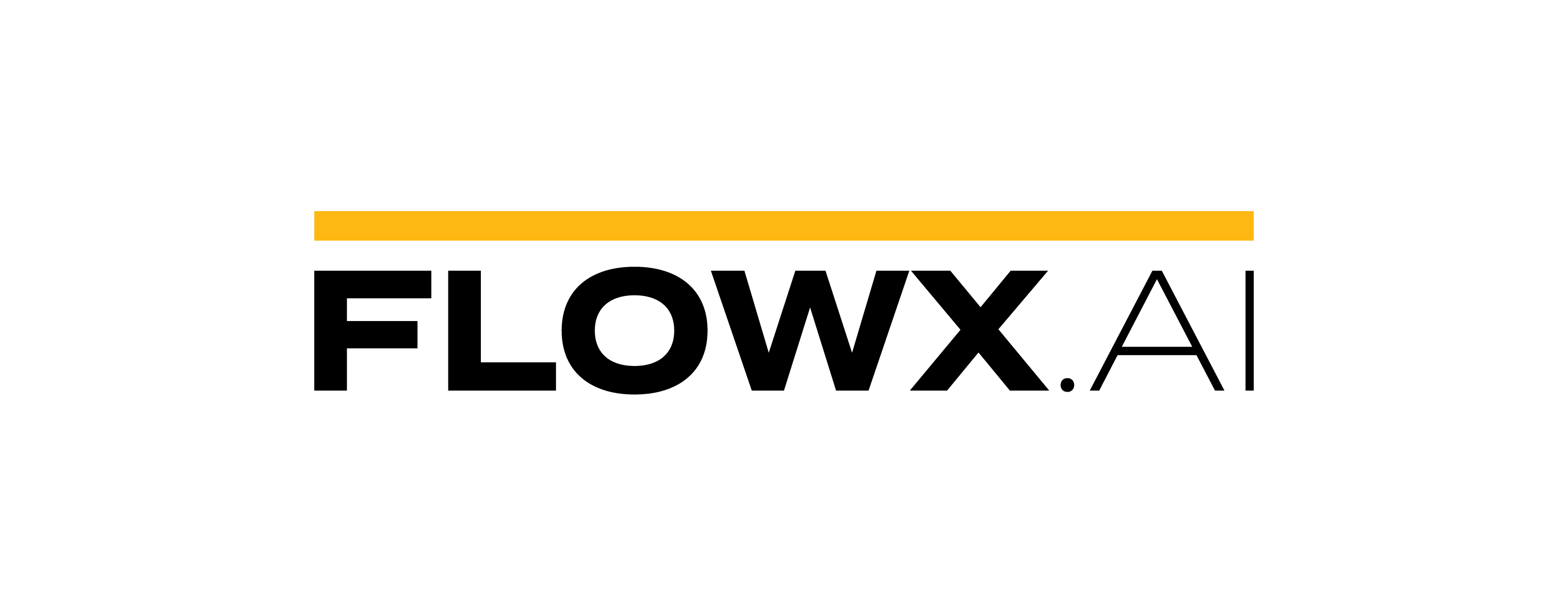
Client Name:
Client ID:
| Item | Description | Price |
|---|---|---|
This is displayed if it is a preferred client. They are eligible for special discounts!
This is displayed if the client has specific requests. Please review them carefully.
This is displayed if the client has an active contract with us.

Displayed when expiryTime field is defined within the process definition. To set up an expiryTime function, follow these steps
response\_key) for output.
* Input: Provide input in JSON format.
* Output: Output is read-only JSON after execution.
\[name] subworkflow not found.
responseKey.
```json theme={"system"}
{
"crmData": "${responseKey}"
}
```
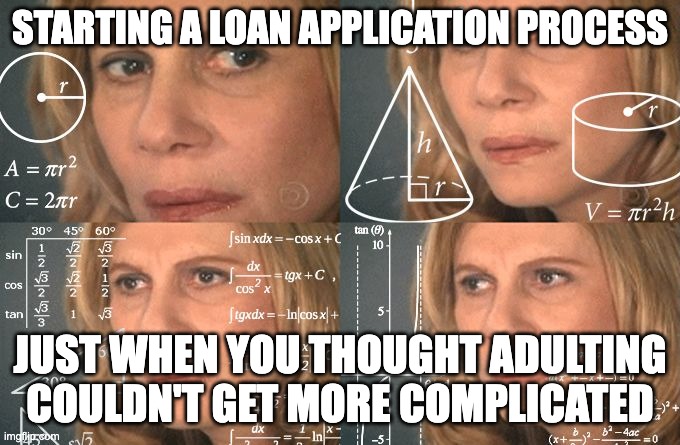 Let's dive in and explore the exhilarating additions:
## **What's New?** 🆕
### Theme Management
The new **Theme Management** feature enhances our design process by establishing a unified visual language across various platforms.
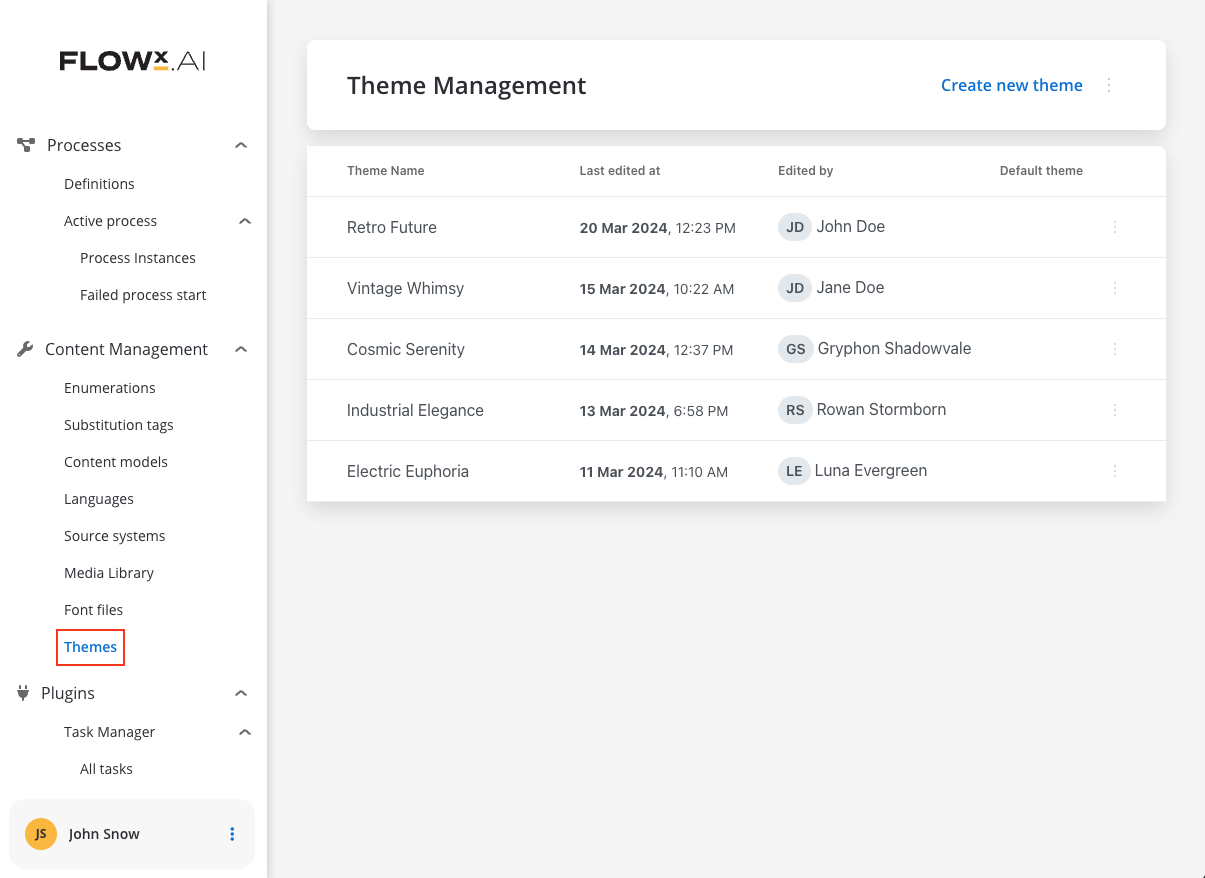
This approach simplifies development by enabling the establishment of a foundational **theme**, which can then be customized to accommodate specific platform requirements.

Ultimately, this streamlines the development process, saving significant time and effort.
Let's dive in and explore the exhilarating additions:
## **What's New?** 🆕
### Theme Management
The new **Theme Management** feature enhances our design process by establishing a unified visual language across various platforms.

This approach simplifies development by enabling the establishment of a foundational **theme**, which can then be customized to accommodate specific platform requirements.

Ultimately, this streamlines the development process, saving significant time and effort.
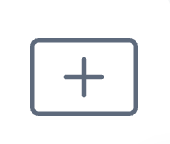 Seamlessly integrate self-contained subprocesses within parent processes for enhanced functionality and encapsulated operations. The Start Embedded Subprocess node enables the initiation of subprocesses within a parent process, offering a range of features and options for enhanced functionality.

Seamlessly integrate self-contained subprocesses within parent processes for enhanced functionality and encapsulated operations. The Start Embedded Subprocess node enables the initiation of subprocesses within a parent process, offering a range of features and options for enhanced functionality.

 ## **Changes** 🔧
## **Changes** 🔧

 Now, with the autocompute feature, this step is no longer necessary, as the data is automatically saved and sent on your process instance.
Now, with the autocompute feature, this step is no longer necessary, as the data is automatically saved and sent on your process instance.

 Now, with the autocompute feature, this step is no longer necessary, as the data is automatically saved and sent on your process instance.
Now, with the autocompute feature, this step is no longer necessary, as the data is automatically saved and sent on your process instance.
By default all process data is reset when the process renderer component gets destroyed. Setting this to true will keep process data even if the viewport gets destroyed
| boolean | false | false | - | | isDraft | When true allows starting a process in draft state. \*Note that isDraft = true requires that processName be the **id** (number) of the process and NOT the name. | boolean | false | false | - | | legacyHttpVersion | Set this to `true` only for HTTP versions \< 2 in order for SSE to work properly. Can be omitted otherwise. | boolean | false | false | - | | projectInfo | Information about the project that contains the process that is being run. | object | true | - | `{ projectId: '1234-5678-9012' }` | | locale | Locale used to localize the application. | string | false | en-US | 'en-US' | | cache | Caching of CMS resources (cached resources include: theme configurations, substitution tags, enumerations, media library assets) | boolean | false | true | - | | customLoader | Custom loader components for different loading scenarios | object | false | - | `{ startProcess: StartLoaderComponent, saveData: SaveLoaderComponent }` |Starting process...
Processing your request...
Starting process...
Processing your request...

 Now, with the autocompute feature, this step is no longer necessary, as the data is automatically saved and sent on your process instance.
Now, with the autocompute feature, this step is no longer necessary, as the data is automatically saved and sent on your process instance.
 Let's dive in and explore the exhilarating additions:
## **What's New?** 🆕
### Theme Management
The new **Theme Management** feature enhances our design process by establishing a unified visual language across various platforms.

This approach simplifies development by enabling the establishment of a foundational **theme**, which can then be customized to accommodate specific platform requirements.

Ultimately, this streamlines the development process, saving significant time and effort.
Let's dive in and explore the exhilarating additions:
## **What's New?** 🆕
### Theme Management
The new **Theme Management** feature enhances our design process by establishing a unified visual language across various platforms.

This approach simplifies development by enabling the establishment of a foundational **theme**, which can then be customized to accommodate specific platform requirements.

Ultimately, this streamlines the development process, saving significant time and effort.
 Seamlessly integrate self-contained subprocesses within parent processes for enhanced functionality and encapsulated operations. The Start Embedded Subprocess node enables the initiation of subprocesses within a parent process, offering a range of features and options for enhanced functionality.

Seamlessly integrate self-contained subprocesses within parent processes for enhanced functionality and encapsulated operations. The Start Embedded Subprocess node enables the initiation of subprocesses within a parent process, offering a range of features and options for enhanced functionality.

 ## **Changes** 🔧
## **Changes** 🔧

 Now, with the autocompute feature, this step is no longer necessary, as the data is automatically saved and sent on your process instance.
Now, with the autocompute feature, this step is no longer necessary, as the data is automatically saved and sent on your process instance.
 Let's dive in and explore the exhilarating additions:
## **What's New?** 🆕
### Theme Management
The new **Theme Management** feature enhances our design process by establishing a unified visual language across various platforms.

This approach simplifies development by enabling the establishment of a foundational **theme**, which can then be customized to accommodate specific platform requirements.

Ultimately, this streamlines the development process, saving significant time and effort.
Let's dive in and explore the exhilarating additions:
## **What's New?** 🆕
### Theme Management
The new **Theme Management** feature enhances our design process by establishing a unified visual language across various platforms.

This approach simplifies development by enabling the establishment of a foundational **theme**, which can then be customized to accommodate specific platform requirements.

Ultimately, this streamlines the development process, saving significant time and effort.
 Seamlessly integrate self-contained subprocesses within parent processes for enhanced functionality and encapsulated operations. The Start Embedded Subprocess node enables the initiation of subprocesses within a parent process, offering a range of features and options for enhanced functionality.

Seamlessly integrate self-contained subprocesses within parent processes for enhanced functionality and encapsulated operations. The Start Embedded Subprocess node enables the initiation of subprocesses within a parent process, offering a range of features and options for enhanced functionality.

 ## **Changes** 🔧
## **Changes** 🔧

 Now, with the autocompute feature, this step is no longer necessary, as the data is automatically saved and sent on your process instance.
Now, with the autocompute feature, this step is no longer necessary, as the data is automatically saved and sent on your process instance.

 Now, with the autocompute feature, this step is no longer necessary, as the data is automatically saved and sent on your process instance.
Now, with the autocompute feature, this step is no longer necessary, as the data is automatically saved and sent on your process instance.
 Let's dive in and explore the exhilarating additions:
## **What's New?** 🆕
### Theme Management
The new **Theme Management** feature enhances our design process by establishing a unified visual language across various platforms.

This approach simplifies development by enabling the establishment of a foundational **theme**, which can then be customized to accommodate specific platform requirements.

Ultimately, this streamlines the development process, saving significant time and effort.
Let's dive in and explore the exhilarating additions:
## **What's New?** 🆕
### Theme Management
The new **Theme Management** feature enhances our design process by establishing a unified visual language across various platforms.

This approach simplifies development by enabling the establishment of a foundational **theme**, which can then be customized to accommodate specific platform requirements.

Ultimately, this streamlines the development process, saving significant time and effort.
 Seamlessly integrate self-contained subprocesses within parent processes for enhanced functionality and encapsulated operations. The Start Embedded Subprocess node enables the initiation of subprocesses within a parent process, offering a range of features and options for enhanced functionality.

Seamlessly integrate self-contained subprocesses within parent processes for enhanced functionality and encapsulated operations. The Start Embedded Subprocess node enables the initiation of subprocesses within a parent process, offering a range of features and options for enhanced functionality.

 ## **Changes** 🔧
## **Changes** 🔧
 Let's dive in and explore the exhilarating additions:
## **What's New?** 🆕
### Theme Management
The new **Theme Management** feature enhances our design process by establishing a unified visual language across various platforms.

This approach simplifies development by enabling the establishment of a foundational **theme**, which can then be customized to accommodate specific platform requirements.

Ultimately, this streamlines the development process, saving significant time and effort.
Let's dive in and explore the exhilarating additions:
## **What's New?** 🆕
### Theme Management
The new **Theme Management** feature enhances our design process by establishing a unified visual language across various platforms.

This approach simplifies development by enabling the establishment of a foundational **theme**, which can then be customized to accommodate specific platform requirements.

Ultimately, this streamlines the development process, saving significant time and effort.
 Seamlessly integrate self-contained subprocesses within parent processes for enhanced functionality and encapsulated operations. The Start Embedded Subprocess node enables the initiation of subprocesses within a parent process, offering a range of features and options for enhanced functionality.

Seamlessly integrate self-contained subprocesses within parent processes for enhanced functionality and encapsulated operations. The Start Embedded Subprocess node enables the initiation of subprocesses within a parent process, offering a range of features and options for enhanced functionality.

 ## **Changes** 🔧
## **Changes** 🔧

 Now, with the autocompute feature, this step is no longer necessary, as the data is automatically saved and sent on your process instance.
Now, with the autocompute feature, this step is no longer necessary, as the data is automatically saved and sent on your process instance.

 Now, with the autocompute feature, this step is no longer necessary, as the data is automatically saved and sent on your process instance.
Now, with the autocompute feature, this step is no longer necessary, as the data is automatically saved and sent on your process instance.
 Let's dive in and explore the exhilarating additions:
## **What's New?** 🆕
### Theme Management
The new **Theme Management** feature enhances our design process by establishing a unified visual language across various platforms.

This approach simplifies development by enabling the establishment of a foundational **theme**, which can then be customized to accommodate specific platform requirements.

Ultimately, this streamlines the development process, saving significant time and effort.
Let's dive in and explore the exhilarating additions:
## **What's New?** 🆕
### Theme Management
The new **Theme Management** feature enhances our design process by establishing a unified visual language across various platforms.

This approach simplifies development by enabling the establishment of a foundational **theme**, which can then be customized to accommodate specific platform requirements.

Ultimately, this streamlines the development process, saving significant time and effort.
 Seamlessly integrate self-contained subprocesses within parent processes for enhanced functionality and encapsulated operations. The Start Embedded Subprocess node enables the initiation of subprocesses within a parent process, offering a range of features and options for enhanced functionality.

Seamlessly integrate self-contained subprocesses within parent processes for enhanced functionality and encapsulated operations. The Start Embedded Subprocess node enables the initiation of subprocesses within a parent process, offering a range of features and options for enhanced functionality.

 ## **Changes** 🔧
## **Changes** 🔧

 Now, with the autocompute feature, this step is no longer necessary, as the data is automatically saved and sent on your process instance.
Now, with the autocompute feature, this step is no longer necessary, as the data is automatically saved and sent on your process instance.

 Now, with the autocompute feature, this step is no longer necessary, as the data is automatically saved and sent on your process instance.
Now, with the autocompute feature, this step is no longer necessary, as the data is automatically saved and sent on your process instance.